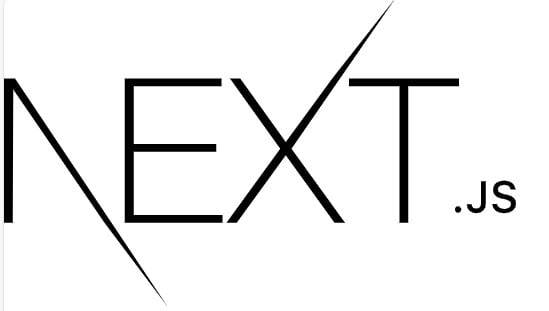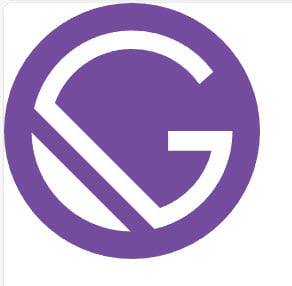Next.js vs. Gatsby: Exploring the Key Differences
In the ever-evolving landscape of web development, the choice of the right framework can be the cornerstone of a successful project. As modern web applications demand more interactivity, speed, and optimized performance, developers are constantly seeking tools that can meet these demands efficiently. Two such contenders, Next.js and Gatsby, have been making waves in the realm of static site generators and server-side rendering.
In this blog post, we will dissect the core features, strengths, and weaknesses of both Next.js and Gatsby, shedding light on when and why you might choose one over the other. By the end of this journey, you’ll have a clearer understanding of which framework aligns best with your project goals, development preferences, and the unique challenges you may encounter along the way.
1. What Is Next.js?
Next.js is a popular and powerful open-source JavaScript framework used for building web applications, particularly React-based ones. Developed and maintained by Vercel, Next.js has gained widespread adoption in the web development community due to its simplicity, versatility, and robust feature set.
At its core, Next.js is designed to simplify the process of building modern web applications by providing a framework for server-side rendering (SSR) and static site generation (SSG). These capabilities enable developers to create highly performant and SEO-friendly websites and web applications.
Here’s a table presenting the key features of Next.js:
| Key Features | Description |
|---|---|
| Server-side Rendering (SSR) | Render React components on the server for improved SEO and initial page load performance. |
| Static Site Generation (SSG) | Generate static HTML files at build time for fast loading and CDN deployment. |
| Routing | Powerful routing system for creating dynamic and nested routes. |
| Developer Experience | Hot module replacement (HMR), fast refresh, and a user-friendly development environment. |
| Automatic Code Splitting | Split JavaScript code into smaller chunks for optimized loading. |
| CSS Support | Support for various CSS methodologies, including CSS modules and styled-components. |
| API Routes | Create serverless API routes within your application for backend functionality. |
| Production Optimization | Automatic image and font optimization, and other production-ready features. |
| Extensive Ecosystem | Rich ecosystem with plugins, extensions, and community support. |
| Excellent Documentation | Well-documented with a large community and official documentation resources. |
| Data Fetching | Built-in support for fetching data from APIs, databases, and other sources. |
| Internationalization (i18n) | First-class internationalization support for building multilingual applications. |
| Analytics Integration | Easy integration with popular analytics tools like Google Analytics and more. |
| Serverless Deployments | Deploy your Next.js applications easily to serverless platforms like Vercel or Netlify. |
| Integration with React Ecosystem | Seamless integration with React and its vast ecosystem of libraries and tools. |
Next.js is often chosen for its ability to combine the benefits of server-side rendering and static site generation while maintaining a developer-friendly experience. It’s a versatile framework suitable for a wide range of projects, from simple static websites to complex web applications.
2. What Is Gatsby?
Gatsby is an open-source static site generator (SSG) and modern web development framework designed to help developers build fast, performant, and highly optimized websites and web applications. It has gained popularity for its ability to create websites that load quickly, have excellent SEO capabilities, and offer a great developer experience.
Here are some key aspects and features of Gatsby:
| Key Features | Description |
|---|---|
| Static Site Generation (SSG) | Gatsby generates static HTML files at build time, resulting in extremely fast loading times and SEO-friendly websites. Content is pre-rendered and can be served via CDN. |
| React-Based | Gatsby is built on top of React, allowing developers to use a component-based architecture to create user interfaces and interactive web applications. |
| GraphQL for Data Fetching | Gatsby leverages GraphQL, a powerful query language, to fetch data from multiple sources, making it easy to pull in content from databases, APIs, and more. |
| Rich Plugin Ecosystem | Gatsby offers a vast ecosystem of plugins that extend its functionality. These plugins cover areas like image optimization, SEO, data sourcing, and more, enhancing customization. |
| Performance Optimization | Gatsby automates performance optimization tasks, such as image optimization, asset lazy-loading, and responsive image generation, resulting in an optimized user experience. |
| Developer Experience | Gatsby provides a developer-friendly environment with features like hot module replacement (HMR) and a fast refresh feature, reducing development feedback times. |
| SEO-Friendly | Gatsby’s static nature and fast-loading pages inherently boost SEO. Additionally, Gatsby offers tools and plugins to further enhance search engine optimization. |
| Content Management | Gatsby can source content from various content management systems (CMSs), including headless CMSs, making it easier to manage content independently from code. |
| Serverless Deployment | Gatsby websites can be easily deployed to serverless platforms like Netlify, Vercel, and AWS Lambda, simplifying hosting and scaling. |
| Progressive Web App (PWA) | Gatsby can be configured to create Progressive Web Apps (PWAs), enabling features like offline access and app-like behavior on supported browsers. |
| Large Community | Gatsby boasts a large and active developer community, offering a wealth of resources, tutorials, and plugins to support your projects. |
These features make Gatsby a powerful choice for building high-performance, SEO-friendly websites and web applications while providing a modern development experience.
3. Next.js vs. Gatsby Comparison
let’s compare Next.js and Gatsby across various aspects to help you make an informed choice for your web development project:
| Aspect | Next.js | Gatsby |
|---|---|---|
| Performance | – Employs SSR and CSR for balanced performance. | – Leads in performance with SSG, resulting in blazing-fast load times. |
| SEO | – Offers SEO optimization but requires more manual effort. | – Utilizes GraphQL for simplified data retrieval, enhancing SEO. |
| Flexibility | – Boasts flexibility with extensive features and customization. | – Provides customization options but is slightly less versatile. |
| Ecosystem | – Growing ecosystem with plugins and resources. | – Larger and more established ecosystem. |
| Community | – Active and supportive community. | – Vibrant and supportive community. |
| React Integration | Built with React in mind. | Built on React; fully embraces React. |
| Data Fetching | Flexible data fetching methods. | Uses GraphQL for data during build. |
| Routing | File-based routing, static & dynamic. | File-based routing with dynamic support. |
| Developer Experience | Fast development feedback loop. | Smooth development experience. |
In summary, both Next.js and Gatsby are excellent choices for web development, but they have different strengths. Choose Next.js if you need flexibility between SSR and SSG and want to integrate seamlessly with React. Opt for Gatsby if you prioritize performance, SEO, and a wide range of plugins, especially for content-driven websites. Ultimately, your choice should align with your project’s specific requirements and goals.
4. Real World Cases for Next.js and Gatsby
Here are real-world use cases for both Next.js and Gatsby:
Next.js:
- E-commerce Platform: A large e-commerce platform like Vercel itself uses Next.js to deliver server-rendered product pages, ensuring SEO optimization and fast initial page loads.
- SaaS Dashboard: Companies like Auth0 use Next.js for their SaaS dashboards. The framework allows them to create highly interactive and SEO-friendly user interfaces for managing authentication and authorization.
- News and Media Websites: Popular news outlets like The Washington Post leverage Next.js for their websites. Next.js enables them to deliver real-time news updates with SEO benefits.
Gatsby:
- Blog and Content Websites: Many blogs, including React’s official blog, use Gatsby for its fast-loading pages and SEO capabilities. Content creators benefit from Gatsby’s GraphQL-based data fetching for articles.
- Portfolio Websites: Web developers and designers often use Gatsby for their portfolio websites. Gatsby’s SSG ensures that their work is presented quickly and efficiently to potential clients.
- Documentation Sites: Open-source projects like Gatsby itself often use Gatsby to build documentation sites. This allows them to provide a smooth and searchable documentation experience to users.
These real-world examples showcase how Next.js and Gatsby are applied in various scenarios to create high-performance, SEO-friendly, and interactive web applications and websites. The choice between the two depends on specific project requirements and preferences.
5. Conclusion
In conclusion, both Next.js and Gatsby are exceptional web development frameworks with their unique strengths and applications. The choice between them should be driven by the specific needs and goals of your project:
- Next.js shines when flexibility and a balanced blend of server-side rendering (SSR) and client-side rendering (CSR) are paramount. It is ideal for projects where performance optimization extends beyond initial page load times, making it well-suited for complex web applications, e-commerce platforms, and dynamic content-driven sites.
- Gatsby, on the other hand, excels in scenarios where speed, SEO optimization, and a streamlined development experience are top priorities. Its static site generation (SSG) approach delivers unmatched performance, particularly for content-focused websites like blogs, portfolios, and documentation sites.
Ultimately, your choice should be guided by your project’s specific requirements. Next.js and Gatsby offer the tools and capabilities to create high-quality, modern web applications and websites, and both have vibrant communities and active support. Whichever framework you select, you can leverage their strengths to build outstanding web experiences.






